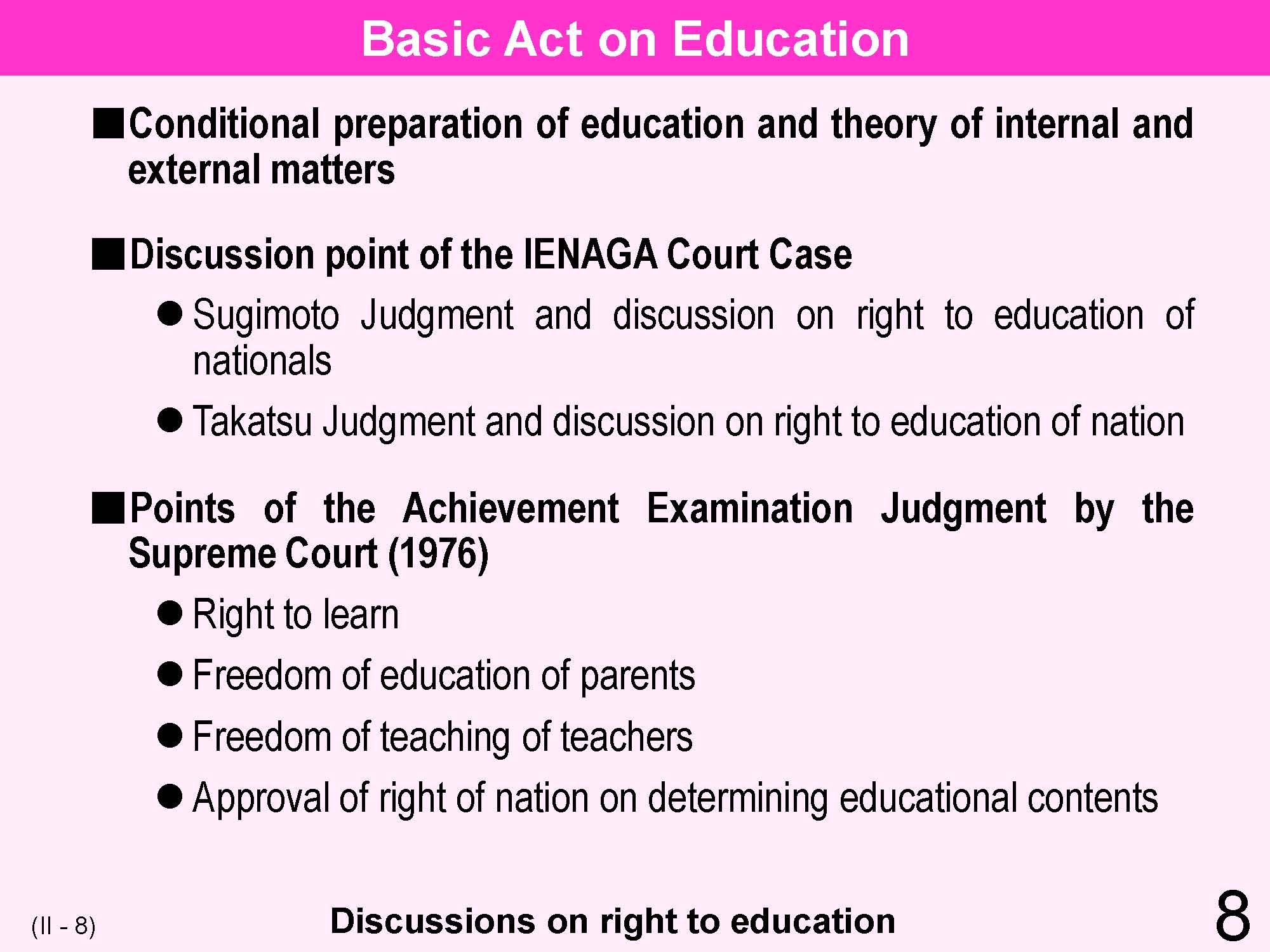| 8 | gII Japanese Educational Administration and Financeh | Previous | Next | JAPANESE |
|---|---|---|---|---|
 |
||||
| The review below mentions two key court cases and illustrates various arguments that were made concerning participation by the state in education, and that had a large influence on reforms of educational administration in Japan after World War (, Specifically, the Court Case on Textbooks, and the Court Case on the Achievement Examination dealt with the issues of citizensf right to learn and on who in Japan has the right to education.
It is clear that discussions on how much a nation should be involved in the education of Japanese nationals was one element that raised awareness of educational issues after the World War (, Namely, what type of educational administration is required and desirable?. It was clear that initiatives for restructuring educational administration fell behind actual needs, such as mechanisms that could representative parents and promote community involvement, as well as to nurture school autonomy. These days, cooperation between the state (Ministry of Education, Culture, Sports, Science and Technology) and teachers (Association of Teachers in Japan) has increased substantially, thereby encouraging reforms on educational administration. |
||||
Please send your comments and concerns here
kamada@criced.tsukuba.ac.jp
Center for Research on International Cooperation in Educational Development(CRICED) University of Tsukuba
1-1-1, Tennodai, Tsukuba-shi, IBARAKI
305-857, JAPAN